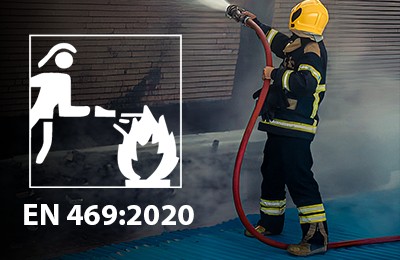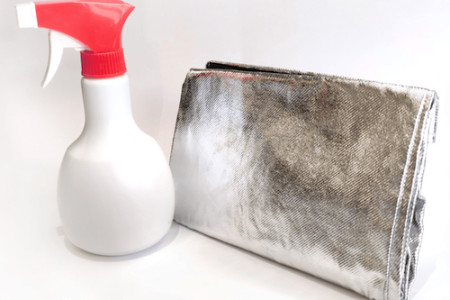Life of a garment depends on the way it is used, how it is cleaned and how it is stored. To control these parameters, FYRPRO® / FYRTEX® / FYRAL® / ELECTPRO® garments should be checked periodically and also after each wash and use. Make sure that there is no damage on the garment.
Inspection periods;
- Routine inspection
- Preliminary inspection
- Final inspection
Routine Inspection And Preliminary Inspection
Routine inspection shall be realised every six months.
Preliminary inspection shall be realised before each usage regardless of the last inspection date.
While performing a routine inspection and inspection just before the usage of the garments, check for any;
• Thin spots
• Holes
• Tears
• Discoloration
• Embrittlement
• Bad smell due to humidity or fumigation
• If your garment has reinforcements on knees, elbows and/or shoulders, examine the
reinforcements.
• Check elasticity of knitted cuffs and check thumb holes for any damage.
• Check for seam integrity. Any missing, loose, burn, torn or melted seams should be noted, and authorised people should be informed.
• Check for reflective trim functionality. Stand in a dark place, at least 20 feet away from the garment. Hold a flashlight and check the reflectiveness.
• Inspect all closure systems to make sure each one is intact and operates properly.
• Examine hook and loop closure for worn, abraded or melted pieces. Objects that accumulated on hook portion may affect the performance of the closure system.
• Examine all zippers for functionality and corrosion.
• Examine shoulder suspenders on trousers, make sure they attach securely and examine for loss of elasticity.
• Check the label of the garment, the standard of the garment must be up to date.
Final Inspection
Final inspection shall be realised after each usage to store the garment properly. Proper storage conditions reduce the potential dangers and help the garments to be used in a safer and longer periods.
After the usage for garments, check for any;
• Thin spots
• Holes
• Tears
• Discoloration
• Embrittlement
• Bad smell due to humidity or fumigation
If you are sure that the garment is undamaged or uncontaminated, follow the instructions given in User Information Guide and store it according to storage instructions
If you notice a damage or contamination;
§ Avoid contacting without a protective equipment.
§ Avoid contaminated garment to touch your personal belongings, vehicles etc.
§ Put the garment in sealed case and label it.
§ Inform your supervisor or employer.
§ Do not use the garment before problem is solved.
§ Destroy the contaminated garment according to local/international standards and/or regulations. Contaminators: blood, blood plasma, toxins, radioactive materials, chemicals and dangerous materials, etc.
§ If the garment is be used again, a proper cleaning procedure is required.
If chemicals and flammable liquids contaminate the garment, it should be removed immediately and cleaned if the garment is undamaged.
Damaged, contaminated, torn garments must not be used again and must be replaced.
Please keep in mind that the garments protect when used in conformity with the instructions. Besides, the employer/user is responsible for choosing the right protective
garment.
Each garment will be accompanied with the attached chart to record inspection dates.









Your Comments